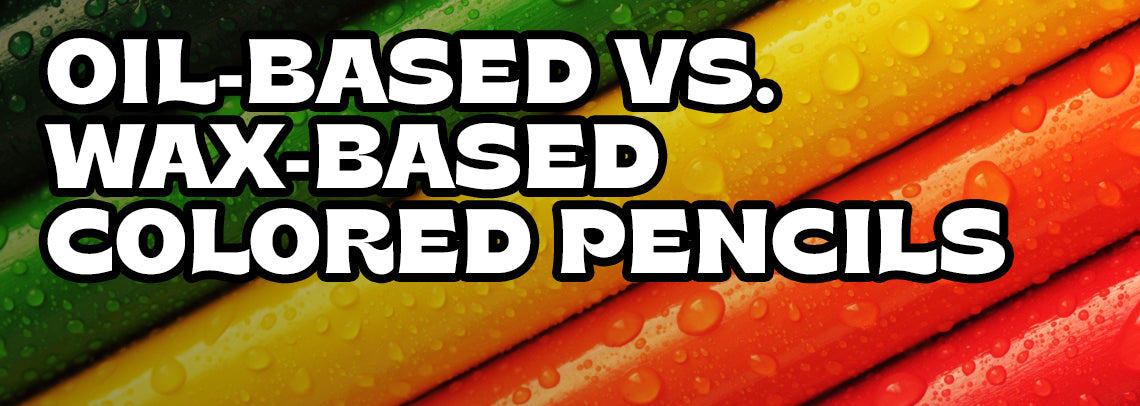However, when you're a beginner, it's often difficult to know which supplies are the best for your needs. Colored pencils in particular can be confusing if you don't have a bit of guidance to light the way. What are the real differences between oil-based and wax-based leads?
That's why we've put together this comparison sheet to give you an easy way to identify which lead base is the right choice for you. Keep reading to learn more!
Layering
The way the color layers upon itself is one of the first questions people ask about colored pencils. Is it possible to create depth in a picture with the pencils? How many times can you layer before the color won't stick to the paper?
Oil-based pencils tend to layer better than wax-based ones because the wax creates a thicker and slippery surface on the page. Too many layers in a single area make it impossible to add any more color.
With either style, it's important to start with a soft touch to build up those rich pigments. This gives you the best layering technique possible!

Blending
Perfect blending is something we all want from our pencils. The good news is that both oil-based and wax-based pencils are good at blending. They even work well with one another.
It all depends on the amount of pigment in the pencils you're using. Without enough pigment, you could scrub at the paper all day without any real effect.
Most of the time, it's your technique that dictates how well a pencil blends with another. Always make sure you use the right motions and start with a light hand as you build up those layers.
A blending pencil often only comes in wax form, but if you hone your skills, you won't need one at all!
Burnishing
As a whole, oil-based pencils have a harder lead which lends itself well to burnishing the paper. Wax pencils can lay down color faster than oil, depending on what kind of paper you're using.
The problem is that the wax pencil lead becomes dull in no time at all. If you're not careful, you'll end up breaking the lead and needing to sharpen it again.
Oil pencils have stronger cores which allow them to press down on the paper without any signs of breaking. It's good to read the description of your pencils since some oil pencils come with a softer lead than others.
Details
When you're looking to add those finishing details to an art project, it often comes down to the softness of the lead. Wax-based pencils have a softer lead than oil pencils, which means they dull faster. You'll need to sharpen them after only a few strokes if you want fine details.
Because of this, oil-based pencils reign supreme when it comes to the tiny details on an art piece. The lead still has a softness that allows for good blending and layering, but it doesn't crumble like wax.
Many artists like having a set of both types to give them the best of both worlds!
Lightfastness
All pencils have a certain lightfastness rating that determines how long those beautiful colors stay beautiful. If you give someone a piece of art as a gift, you want to feel confident that the art won't fade away in a year.
If you're practicing or only doing art for yourself, lightfastness doesn't matter as much.
A good way to tell how resistant your pencils are is to do a test at home. Swatch your colors on a piece of paper and then use opaque tape to cover one side of those swatches. Tape the paper to a window that gets plenty of sunshine.
Check it at the end of the day and see the differences between the two sides. This shows you how strong your pigments are without fail.
Durability
When you're using pencils to color in a coloring page after a stressful day, you don't want the lead to keep breaking on you. It's a frustrating problem and it wastes a lot of the core when you're forced to sharpen it again and again.
This is why oil-based pencils are a great tool for any artist. The harder leads make them more resistant to breakage. They hold the pencil point well for much longer than the softer wax-based pencils.
This means that you'll get to enjoy oil-based pencils for many more art pieces than wax ones.
Wax Bloom
As the name suggests, wax bloom is a problem that goes hand-in-hand with wax-based pencils. This white film doesn't harm your picture and is easy enough to wipe away with a soft cloth.
However, many people find it a hassle to deal with. You might end up smudging all of your hard work if you're not careful. It's also possible that the wax bloom shows up after you've given the art piece away, resulting in dull colors.
With oil-based pencils, you don't need to worry about wax bloom at all.
Cost
Wax-based pencils are often cheaper because they're easier to find. There are many brands out there that offer wax-based pencils of all qualities. The problem with this is that you never quite know if the binder overwhelms the pigment.
Oil-based pencils may cost more, but you're guaranteed that the pencils are high-quality. Plus, there are many affordable options on the market these days. All it takes is a little searching to find the best match!
The Best Colored Pencils Bring Inspiration
Now that you know all the differences between the two main types of colored pencils, it's easier to choose the right match for your artistic needs. As long as the pencils you choose inspire you to create, then they're a great choice.
The main thing to keep in mind is that the pencils need to be high-quality to give you the most color payoff!
Ready to begin your creative adventures? Check out our selection of art supplies that are perfect for both beginners and professionals alike!






